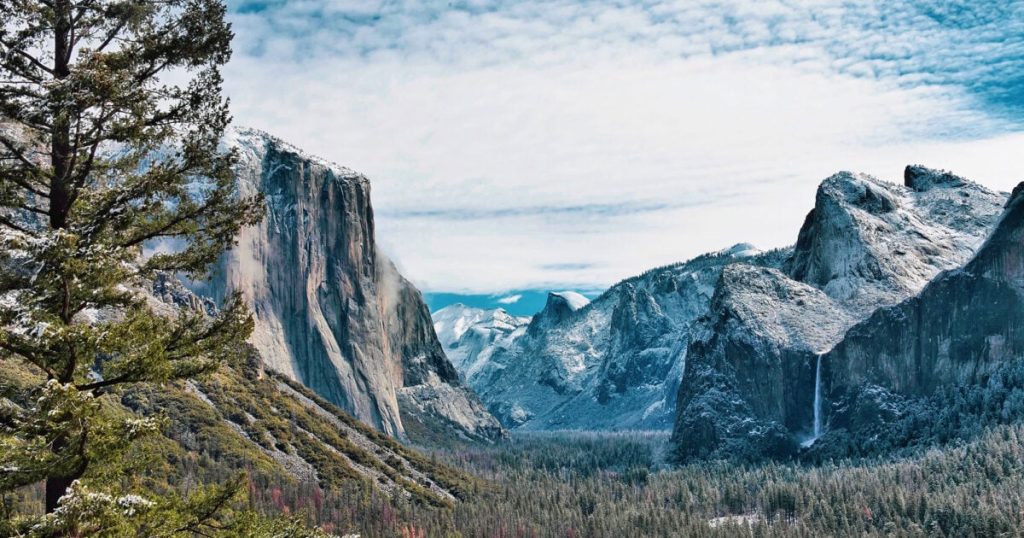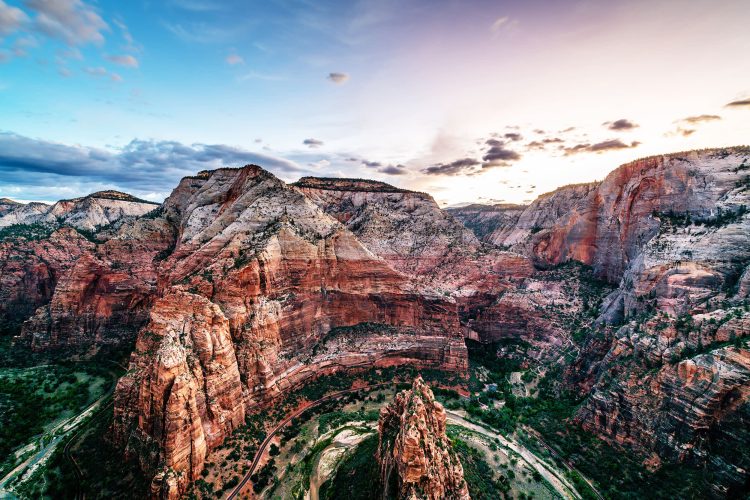Introduction to the Concept of National Parks as Cultural and Natural Treasures
National parks are some of the most treasured natural and cultural landmarks in the world. These protected areas not only preserve biodiversity and ecosystems but also often embody the cultural heritage of the surrounding communities. National parks can range from vast, remote wilderness areas to accessible, carefully maintained landscapes that blend nature with human history. Visiting these parks offers travelers a chance to immerse themselves in breathtaking scenery while respecting both the environment and the customs of the local people.
National parks are designed to offer an opportunity for both environmental conservation and public enjoyment, and many of them hold spiritual or cultural significance for local communities. The experience of visiting a national park often goes beyond simply exploring wildlife or hiking scenic trails—it is an opportunity to connect with a natural landscape that holds deep value, not just for its beauty, but also for its history and cultural importance.
Whether you are embarking on a hiking trip in the vast forests of the United States, a safari in South Africa, or a trek through the Andes of Chile, understanding the cultural context of national parks and practicing eco-conscious travel are essential for making the most of your journey. In this article, we will guide you on how to adapt to local customs, explore some of the best national parks in the world, and offer tips on navigating the balance between nature conservation and cultural sensitivity.
How to Adapt to Local Customs While Visiting National Parks
When visiting national parks, especially those in countries with distinct cultural practices and traditions, it is important to adapt to local customs to ensure a respectful and enriching experience. National parks can be deeply connected to indigenous cultures, local communities, and specific spiritual beliefs. Taking the time to understand these cultural elements will not only enhance your experience but also help preserve the integrity of these sites for future generations.
- Respect Indigenous Practices: Many national parks are located on land that holds deep significance for indigenous communities. Before visiting, take time to learn about the traditions and beliefs that local groups have associated with the park. For example, in places like Yellowstone National Park in the United States or Torres del Paine National Park in Chile, indigenous peoples have a long history of relationship with the land. Engaging with local guides or cultural representatives and showing respect for their heritage is essential.
- Follow Local Etiquette: Each country or region has its own set of customs, even when it comes to enjoying nature. In some cultures, specific behavior is expected when visiting sacred sites or natural wonders. For example, in Japan’s national parks, visitors may be expected to bow when entering certain areas as a sign of respect. Likewise, in South Africa’s Kruger National Park, there may be certain protocols for interacting with animals and engaging with local guides.
- Learn about Local Conservation Efforts: Every national park has its own approach to conservation, and many local communities work hard to preserve the natural environment and its wildlife. Understanding how these conservation efforts tie into local cultural practices can provide a deeper appreciation of the park’s significance. Many parks are also involved in community-based ecotourism, where visitors are encouraged to contribute to sustainability efforts. Look for educational programs, tours, or talks that emphasize the park’s ecological importance and its relationship with local communities.
- Practice Cultural Sensitivity: When engaging with local communities around national parks, always approach with cultural sensitivity. For instance, in Banff National Park in Canada, the indigenous Blackfoot people have traditional ties to the land. Always ask permission before taking photographs of local people or sacred sites, and be mindful of how your actions may impact their cultural practices. Additionally, when interacting with local guides or other park staff, approach them with an open mind and show gratitude for their expertise and hospitality.
- Respect Sacred Sites: Many national parks contain sacred or historically important sites. In places like Peru’s Machu Picchu or India’s Jim Corbett National Park, visitors are expected to adhere to guidelines that protect sacred lands or historical ruins. Take time to understand the significance of these places before visiting, and follow all rules regarding entry and conduct. In some cases, you may need special permission to visit certain sacred areas, and it is important to abide by these guidelines out of respect for the culture and the environment.
Best Parks to Visit: Yellowstone, Kruger, Banff, Torres del Paine
Now that we understand how to navigate cultural practices, let’s explore some of the best national parks that offer a blend of stunning landscapes, rich biodiversity, and local cultural experiences. These parks represent a range of environments, from expansive wilderness areas to rich cultural hotspots, each with its own story to tell.
- Yellowstone National Park, United States
Yellowstone is one of the most famous national parks in the world, and it holds a unique place in American history as the first national park ever established in 1872. Its geothermal features, including geysers, hot springs, and fumaroles, are awe-inspiring and attract millions of visitors every year. However, beyond the natural beauty of the park, Yellowstone is also a site of cultural significance, especially for Native American tribes. The park lies on land traditionally inhabited by tribes such as the Crow, Shoshone, and Lakota. Understanding their cultural connection to the land enhances the visit and can deepen your appreciation of Yellowstone’s beauty.

- Kruger National Park, South Africa
Kruger National Park is one of Africa’s largest and most iconic game reserves, known for its incredible biodiversity, including the famous “Big Five”—lion, elephant, buffalo, leopard, and rhinoceros. Kruger’s history is intertwined with South Africa’s colonial past, but it is also a region that has deep cultural ties with local indigenous communities, including the Shangaan and Tsonga peoples. Visitors to Kruger can learn about traditional African customs and how they intersect with modern conservation efforts. There are also opportunities to participate in community-based conservation programs and to engage with local guides, who share valuable insights into the park’s wildlife and cultural significance.
- Banff National Park, Canada
Located in the Canadian Rockies, Banff National Park is Canada’s oldest national park and one of the most stunningly beautiful destinations in North America. Known for its crystal-clear lakes, towering mountains, and diverse wildlife, Banff is a haven for outdoor enthusiasts and nature lovers. However, Banff is also home to the indigenous Blackfoot Nation, and their culture is integral to the history of the region. Visitors can take part in guided tours led by Blackfoot guides, learn about traditional practices, and visit sacred sites in the surrounding landscape. The combination of natural beauty and indigenous cultural heritage makes Banff a unique destination for those seeking both adventure and a deeper cultural experience.
- Torres del Paine National Park, Chile
Located in southern Chile, Torres del Paine National Park is renowned for its dramatic landscapes of jagged peaks, turquoise lakes, and glaciers. It is a paradise for trekkers and nature lovers, offering some of the most picturesque trails in the world. Torres del Paine is also culturally significant for the indigenous peoples of Patagonia, including the Tehuelche and Mapuche peoples. While exploring the park, visitors can gain insight into the local traditions and spiritual practices of the indigenous people, who have lived in harmony with the land for centuries. The park is also part of a larger conservation effort aimed at protecting Patagonia’s unique ecosystems and wildlife.
How Nature Influences Local Cultural Practices
The relationship between nature and local cultures is profound, and it plays an essential role in shaping customs, traditions, and daily life. National parks often represent the intersection of nature and culture, where the landscape itself influences social, spiritual, and economic practices.
- Sacred Landscapes: In many parts of the world, certain natural features such as mountains, rivers, or forests are considered sacred. For example, Mount Fuji in Japan is revered as a sacred symbol in Shinto and Buddhist practices, and it is often associated with spiritual journeys. Similarly, the Grand Canyon holds spiritual significance for several Native American tribes, including the Hopi and Navajo, who regard the canyon as a place of creation.
- Sustaining Local Livelihoods: In many national parks, the surrounding communities rely on natural resources for their livelihoods. For example, in the Serengeti, Tanzania, the Maasai people traditionally depend on cattle herding, which is closely linked to the land and wildlife. Visitors can learn about how these communities balance their traditional practices with modern conservation efforts, and how they depend on preserving the park’s wildlife for future generations.
- Cultural Festivals: Many national parks host cultural festivals or events that celebrate the connection between nature and the people who live there. In Banff, for example, visitors can attend the annual Banff Mountain Film Festival, which celebrates outdoor adventure and environmental conservation. In Torres del Paine, local indigenous communities might host traditional festivals that showcase music, dance, and storytelling, all of which are inspired by the surrounding natural beauty.
Travel Tips for Staying Eco-Conscious While Exploring National Parks
Eco-conscious travel is an essential component of responsible tourism, especially when visiting national parks. The goal is to minimize your environmental impact while respecting the local culture and wildlife. Here are some practical tips to help you stay eco-conscious during your visits:
- Stick to Marked Trails: To preserve the natural environment and prevent erosion, always stick to designated trails. Avoid cutting through the landscape or disturbing wildlife habitats. This helps minimize human impact on the park’s ecosystems.
- Leave No Trace: Practice the Leave No Trace principles by packing out all your waste, avoiding single-use plastics, and minimizing noise and light pollution. Respect the natural environment by leaving it as you found it.
- Support Sustainable Tourism: Choose eco-friendly accommodations, local guides, and sustainable travel options. Many parks now offer eco-tourism initiatives that help support local communities while minimizing environmental impact.
- Respect Wildlife: Observe animals from a safe distance and avoid feeding them. Human interaction can alter animal behavior and disrupt ecosystems. Always follow park guidelines regarding wildlife viewing.
- Offset Your Carbon Footprint: Consider compensating for your travel emissions by investing in carbon offset programs, which help mitigate the impact of travel on the environment.
Conclusion
National parks offer more than just spectacular views and outdoor adventures—they represent the intersection of nature, culture, and history. Visiting national parks in different countries allows travelers to experience the beauty of the natural world while connecting with local customs, traditions, and conservation efforts. By adapting to local cultural practices, supporting
sustainable tourism, and respecting the environment, you can contribute to the preservation of these cultural and natural treasures for generations to come.





















